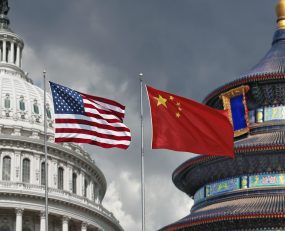
The United States has signed a phase-one deal with China, with an expected implementation in mid-February, preventing further escalation of the bruising 19-month trade war that was scheduled for December of last year.
The highly anticipated details are now outlined in an 86-page document, with Beijing committing to increase imports from the US, enhance protection of intellectual property, stop forced technology transfers, relax trade restrictions in food and agriculture, and open up its financial sectors. In return, the US removed China as a “currency manipulator” early on this week before the signing, and is set to suspend December tariffs planned for December 2019, as well as halving tariffs imposed back in September from 15% to 7.5%, on $120bn worth of goods. China maintains its retaliatory tariffs.
The suspended tariffs would have imposed additional tariffs on goods such as laptops, toys, and video games, thus virtually covering all major remaining areas of trade with China, worth $160bn. Beijing agrees to purchase $200bn of services and goods over the course of two years; among them, $77.7bn in manufacturing purchases, $52.4bn worth of energy products, $37.9bn in services, and $32bn in farm goods.
The specifics of the deal had been unclear so far, with conflicting statements and Beijing mostly remaining silent, failing to confirm details of the deal President Trump had been loftily announcing. Consequently, celebrations were limited previous to the signing though prospects started to look up with the US stock market hitting a record high shortly before the deal was signed. Nonetheless, questions about how realistic some of the terms are linger.
The structural changes Beijing committed to, such as refrain from forced technology transfers and access to their financial sector are promises they have made before, yet never materialized. The amount of agricultural products they agreed to purchase, left many scratching their heads; even if soy, the leading item exported to China from American farms, returned to peak pre-trade war volumes, it would not go beyond $23bn. China has also been able to successfully find alternative suppliers for its soy consumption, such as in Brazil, potentially further limiting the seminal success Trump desired for US farmers. Adding other popular items such as pork and sorghum, that are mostly in single digit billions of dollars, still might not suffice in reaching the target. Pork had become a particularly pressing issue for Beijing, as the African swine flu devastated China’s preferred meat industry, doubling its price compared to last year’s price listing. It is likely it has increased the urgency to compromise and might help in hitting the required digits in the coming months. How China can possibly meet these demands and also adhere to WTO principles of non-discrimination among trading partners remains unclear.
The current deal also comes with mechanisms in place to ensure mutual compliance, including regular meetings between top officials to resolve any disputes, that are likely to contribute to the progression of future deals. Plans for a phase-two deal are already underway according to President Trump, entailing negotiations about industrial subsidies to the use of state-owned enterprises, cyber theft, and digital trade.
While the effects and success of the deal for the two largest economies will be closely observed in coming months, initial commentary is not overly optimistic. Many say it is more of a purchase deal than a real trade deal, and with the Peterson Institute for International Economics (PIIE) reporting that average tariffs will not drop below 19.3% even after the deal takes effect this means they will remain about six times higher than before the trade war began in early 2018. Some of the language in the deal included statements about the purchases being contingent on “market conditions”, seemingly voiding some of the hopes agricultural markets had and sending US soybeans prices down 1.4%. Scott Kennedy from the Center of Strategic International Studies (CSIS), conclusively stated, “the costs have been substantial and far-reaching, the benefits narrow and ephemeral”. For the time being, negotiation and compromise seem preferable to escalation, at the very least helping the markets with incremental improvements.
Source: Transport Intelligence, January 16, 2020